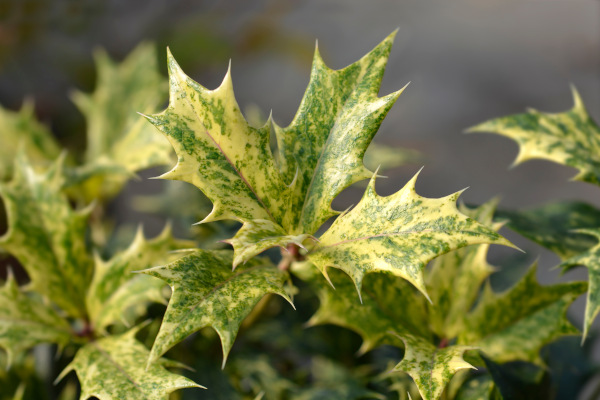How to grow Osmanthus
Osmanthus are hardy, small to medium-sized shrubs grown for their handsome evergreen foliage and, with some species, their small but fragrant flowers. Most species are easy to grow and thrive in sun or partial shade.
Osmanthus are slow growing and may take a year or two to establish - reaching their mature height in 10-20 years. Given time they make excellent feature plants for borders, screening or hedging being robust and relatively maintenance free.
The key attributes depend upon species. We supply Osmanthus x burkwoodii (AGM), Osmanthus Armatus and Osmanthus Delavayi which are grown for their clusters of creamy white, sweetly scented flowers in either spring or autumn. They also have exceptional evergreen foliage – particularly armatus with its holly like leaves - and also bear purplish or black berries, in autumn or spring. Some species of Osmanthus also work well as alternatives to box.

Zantedeschia is a genus of flowering plants from the family Araceae and is native to southern Africa. With a rich history dating back to the Ancient Romans, these deciduous or semi-evergreen perennials have been used as a symbol of celebration. Zantedeschia was Named after Professor Giovanni Zantedeschia, an Italian botanist.
There are two main forms of Zantedeschia: hardy and tender. Hardy forms of the plant can be grown outdoors, enjoy moist soil and full sun or partially shaded conditions - these are known as Arum lilies. Tender forms of Zantedeschia prefer being grown in containers or pots and should be brought inside over the winter - these are known as Calla lilies.
With tuberous flora in all colours from whites, yellows and oranges to deep reds and purples, Zantedeschias are not to be overlooked in any garden, as long as they have sufficient sunlight to grow in.
Ready to learn more about growing Zantedeschia? Read on for all there is to know...

Key Information
Soil pH
Position
Hardiness

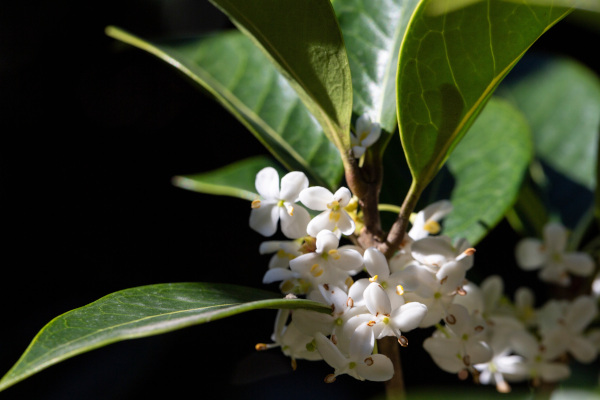
Where & when to plant Osmanthus
Position- Either full sun or partial shade of any aspect.
Soil- Any moist, well-drained soil.
Flowering Period- Autumn (for armatus) or mid to late spring
Hardiness- Hardy (H5) evergreens able to tolerate temperatures down to -10 to -15°C.
Plant osmanthus in spring or autumn in any reasonably fertile, moist, well-drained soil. Position in sun or partial shade, avoiding exposure to exceptionally cold winds or ground prone to waterlogging. Mulch with compost and feed annually with a general fertilizer, in early spring. Trim in late winter or early spring as, and if, required. Ideal for the middle to back of a border, in a woodland garden, or as a hedge planted in a single row. If planting as a hedge, use three plants per metre. Variegated varieties are most compact in shape and best suited to growing in large pots. Although Osmanthus grows either in sun or shade, more flowers will be produced in a sunny site.
How to plant Osmanthus
- For planting in the garden, dig the soil area removing any large stones and weeds and breaking up any lumps. Mix in some organic matter. Rake level and firm with your heels. Rake level again.
- Water plants well and allow to drain before planting.
- A good tip is to dig a hole twice the size of the root-ball. Fill with water and allow to drain before placing in the plant.
- Place the plant in the hole, ensuring the top of the root ball sits level with the surface of the soil. Too low and the plant may rot, too high and the roots can dry out.
- Backfill with soil and firm in gently with your foot.
- Soak well with water.
- Mulch around the base with well-rotted organic matter.
- For planting in containers first choose an appropriately sized pot. The best practice is to start just a few centimetres larger than the rootball and increase in size every year or two. Always ensure there are plenty of drainage holes in the bottom.
- If you are using a large or heavy pot, it can be a good idea to fill and plant it in situ to save yourself the trouble of moving once full.
- Use a good quality compost with some horticultural grit mixed in, and, if not already present in the compost (check the description on the bag) some slow-release fertiliser granules.
- Start by partially filling the pot with compost; enough so that when placed on it the upper surface of the root ball is about 3cm lower than the top of the pot.
- Infill all the space surrounding the root ball with compost, firming down with your fingers then adding a little more so the plant is held tight.
- Pick up the container and lightly tap on the potting bench or ground a few times to help further settle the compost around the plant.
- Soak well with water.
- A mulch with horticultural grit will look attractive and help to prevent a ‘cap’ or crust forming on the top of the compost (something container plants can suffer due to the artificial nature of their watering).
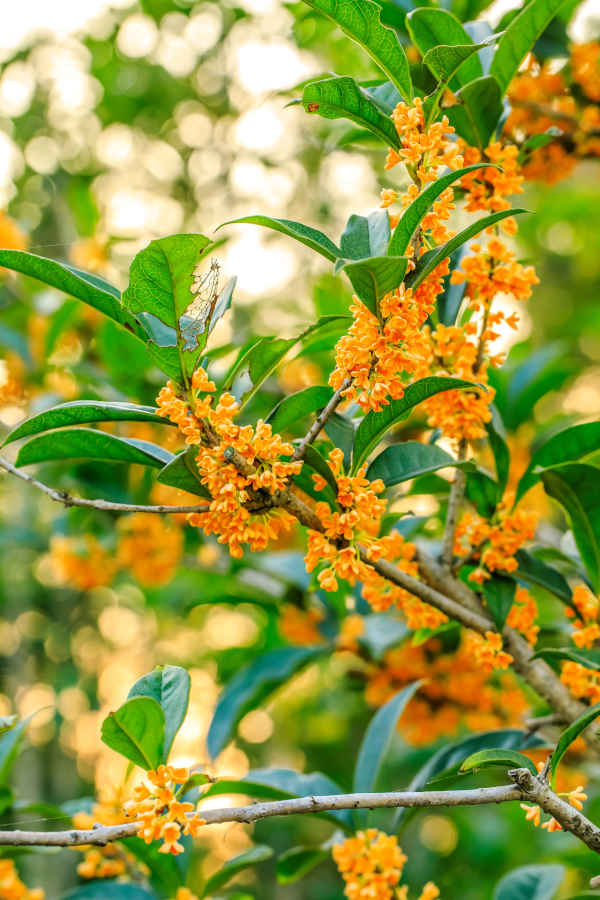
What to plant with Osmanthus
The possibilities are endless when it comes to this adaptable and versatile shrub. Evergreen species can make handsome additions to low-maintenance shrubberies, alongside similarly undemanding companions such as choisya, pittosporum, and mahonia.
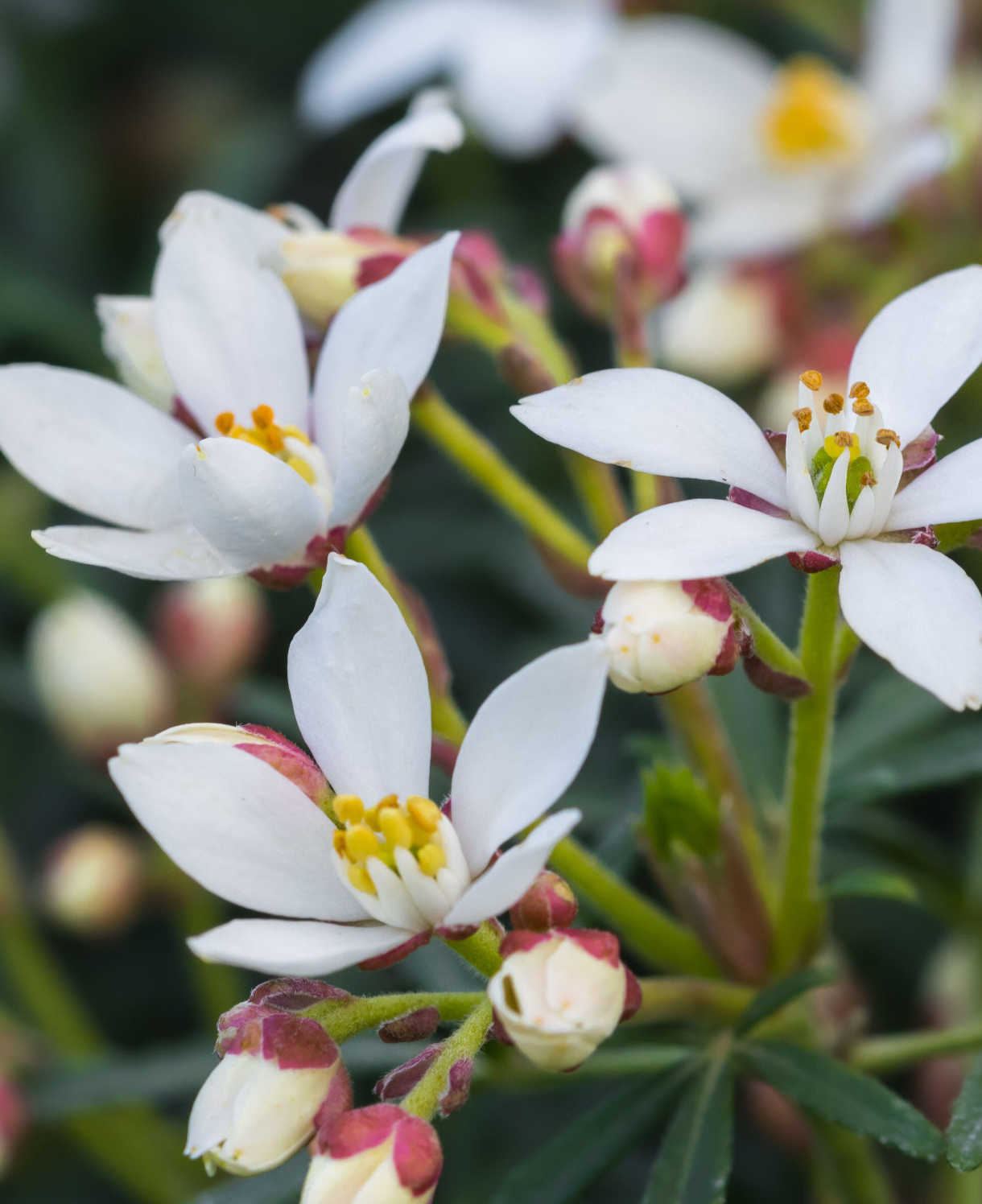
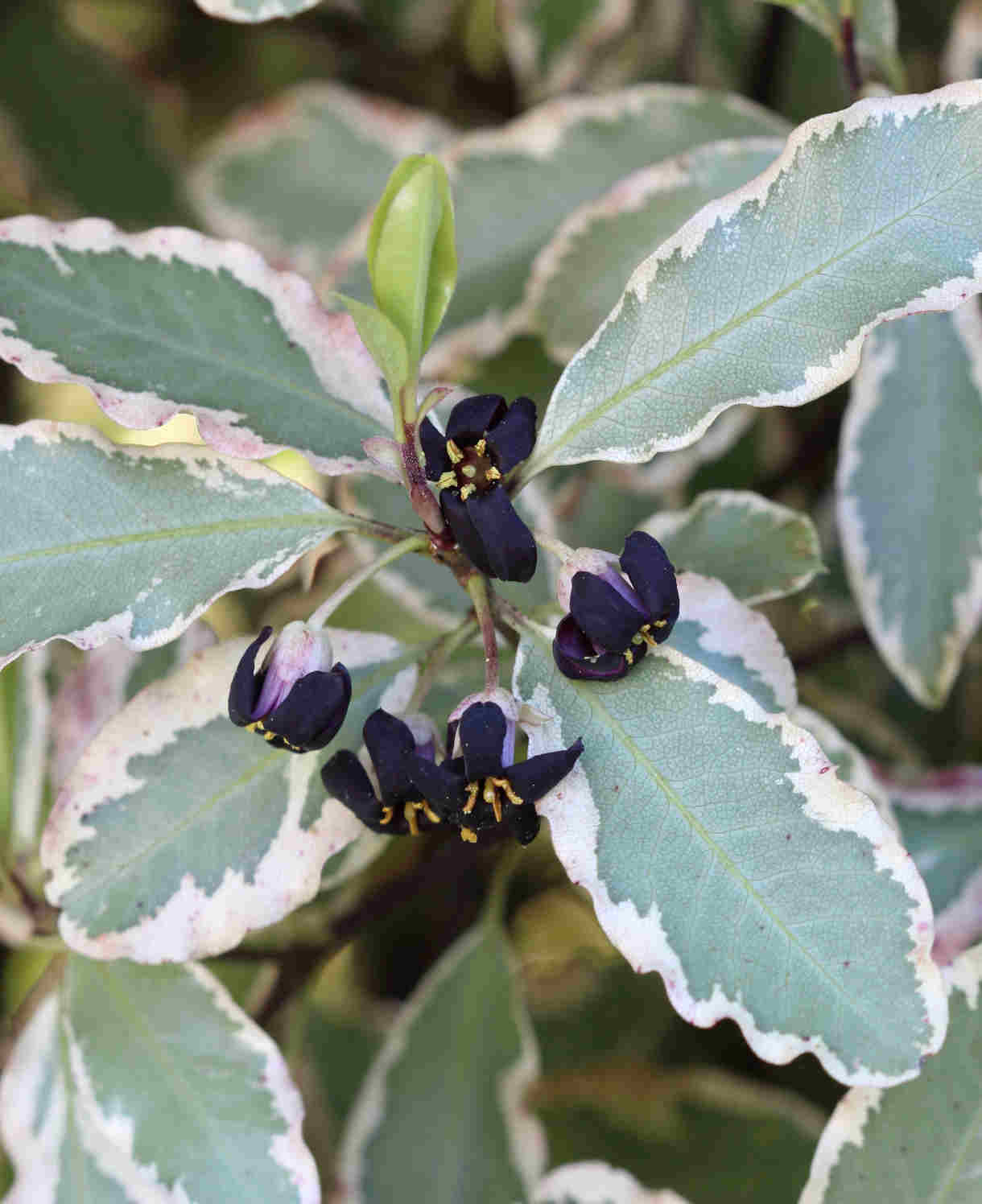

How to care for Osmanthus
Pruning and Deadheading
If you can it’s best to leave Osmanthus untouched, as it flowers and fruits on the previous year’s growth. This means pruning, no matter when you do it, will always interrupt the display in some way.
If you need to restrict size our advice is as follows.
Evergreen species can be shaped lightly immediately after flowering for those which bloom in spring or later in spring for these grown predominantly for foliage.
Hedges are best trimmed straight after flowering.
Watering
Like all trees and shrubs, Osmanthus should be regularly watered during its first year or two in the ground. After this, it should only need watering in prolonged dry spells. When watering, give a deep, thorough soak then allow the top few centimetres of soil to dry out before repeating (this encourages the formation of deep roots, as opposed to watering little and often which can result in roots growing mainly in the surface of the soil). To check this, wiggle your finger down into the soil until you hit damp.
Container-grown Osmanthus have less access to moisture so need regularly watering throughout every growing season. Again, water deeply and allow the top few centimetres of compost to dry out before repeating, though be aware that in the height of summer this can happen very quickly and some container-grown plants may need watering every day (particularly those in smaller pots). From mid-autumn, the British climate tends to take over watering needs, though do remember to step in in the event of an unseasonably dry spell.
Feeding
On most soils, a mulch of well-rotted organic matter (i.e., a layer of manure or garden compost applied to the soil around the plant) should provide enough nutrients for your Osmanthus. This has the added benefit of suppressing weeds and locking in moisture. Mulch when planting, and then again each spring.
If you feel your Osmanthus could do with a boost, particularly if you’ve given it a hard prune, applying a general-purpose granular feed to the surface of the soil and lightly working in (known as a ‘top dress’) can reap benefits. Do this when mulching in spring – first apply the top dress, then cover with the mulch.
Container-grown Osmanthus is different, relying solely on the gardener for nutrition. Get off to a flying start by making sure you use a good quality compost with some slow-release fertiliser granules mixed in. After this, carry out a replenishing ‘topdress’ annually in spring, simply scraping away the top few centimetres of compost and replacing with a fresh load (also with slow-release fertiliser granules mixed in). Remember also to repot your Osmanthus every few years, going up slightly in size each time until it reaches full size.
Cold Protection
The majority of popular Osmanthus can withstand even a cold UK winter without the need for additional protection. Although do bear in mind that container planted varieties have less protection than those in the ground and may benefit from a degree of shelter if the weather is exceptionally cold.
Pests and Diseases
Generally, pest free. Can succumb to honey fungus, though rarely. Check for signs and remove the entire shrub, disposing of carefully by burning or putting into landfill.
How to propagate Osmanthus
The most reliable way to propagate berberis is by taking semi-ripe cuttings in summer. You can try collecting and sowing seed, but these are notoriously variable as many species cross freely with one another.
- Select healthy, non-flowering shoots from the current year’s growth.
- Snip cuttings off the plant, taking a longer piece than the ideal eventual length of around 10cm (to allow for trimming).
- Put them in a plastic bag straight away to prevent drying out.
- Fill a pot (or several, if you have a lot of cuttings) with a perlite-heavy compost mix (at least 50% perlite).
- Trim the end of the cutting to just below a node (point at which leaves grow).
- Remove lowest leaves, leaving 2-4 leaves.
- If the remaining leaves are large, cut them in half with a sharp knife (to reduce water lost through transpiration).
- Insert the cuttings into the compost and water lightly. Several cuttings can be put in the same container if there is enough space to do this without them touching.
- Place in a warm, sheltered spot with indirect light (a cool greenhouse, conservatory, windowsill or porch is ideal).
- Water regularly until roots emerge out of the bottom of the container.
- Gently remove rooted cuttings and pot them into individual pots. Grow on in a cool yet frost-free environment such as an unheated conservatory, greenhouse, or cold frame until they are large enough to be planted out.
* Many plants carry Plant Breeders Rights and cannot be propagated for commercial purposes.
Common Osmanthus questions
How quickly does Osmanthus grow?
Most Osmanthus have a slow growth rate and can take 10-20 years to reach their full height and spread.
Is Osmanthus easy to grow?
Exceptionally, aside from waterlogged soil or deep shade, Osmanthus will have a good go at thriving in almost any situation. Given enough space to reach full size, they don’t even need pruning.
Is Osmanthus poisonous?
No toxic effects reported to humans, cats or dogs.
